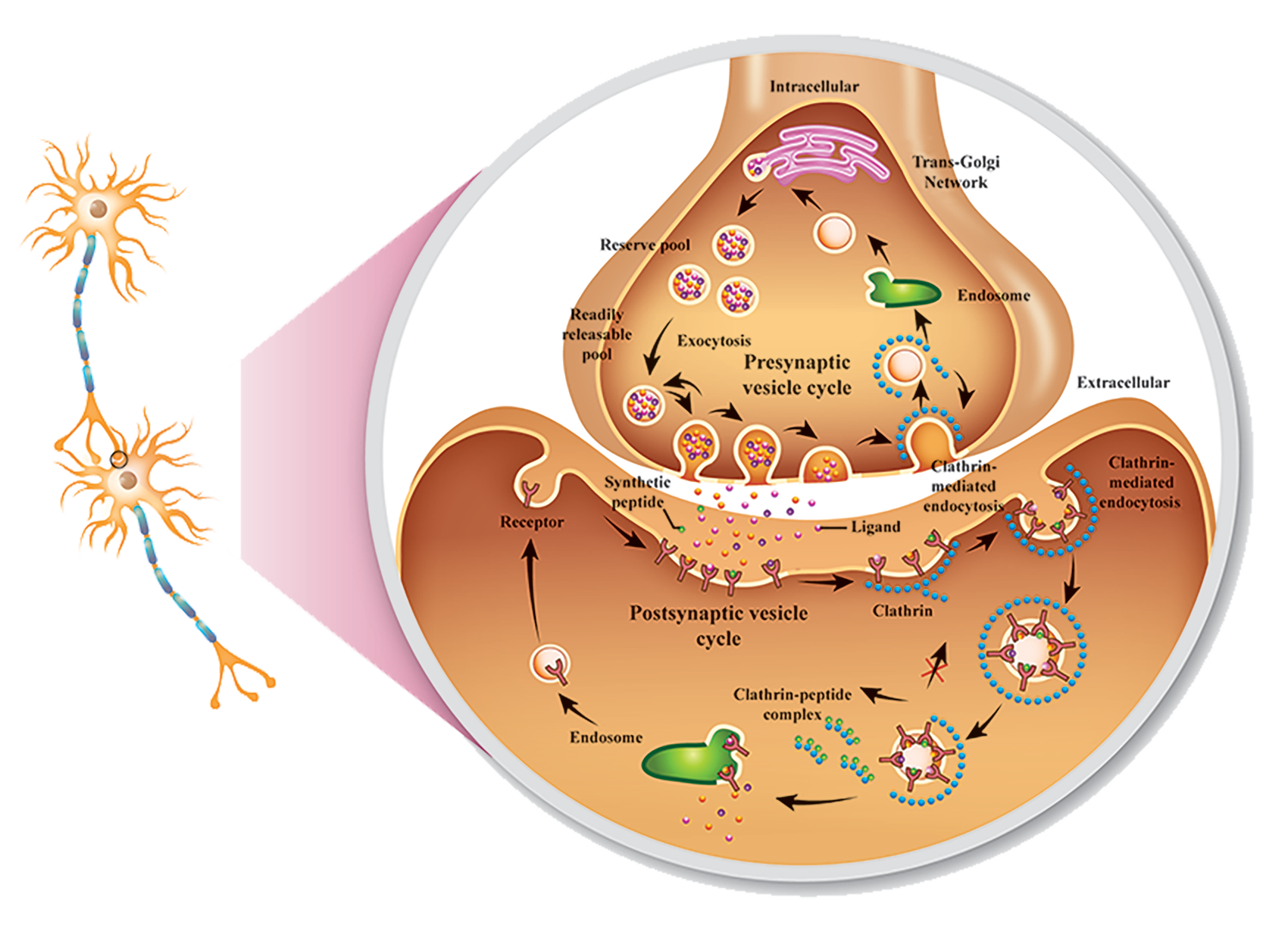Breakthrough Non-narcotic Peptide Painkiller
The discovery phase has been over 25 years.
Now Preclinical study is 100% completed.

The special role of CME in the process of pain synaptic transmission.
Mechanism of action
The analgesic effect of the Anodynal® is associated with a specific binding of a clathrin heavy chain.
It is fundamentally important that inactivation of the clathrin heavy chain entails the loss of activity of the entire clathrin complex and inhibition of clathrin-mediated endocytosis (CME).
CME has a special role in the synaptic pain transmission in the nervous system.
The signal-transmitting (presynaptic) region of the nerve cell and the signal-receiving (postsynaptic) region of the other cell are separated by a narrow synaptic cleft. When a nerve impulse is received, the vesicles filled with a neurotransmitter, the main component of which is clathrin, merge with the presynaptic membrane (exocytosis), releasing the neurotransmitter into the synaptic cleft. When the neurotransmitter interacts with the receptor on the postsynaptic membrane, there is an electric signal, the value of which determines the excitation in the postsynaptic cell. A rapid decrease in the vesicle number in the nerve end with a continuous nerve impulse is compensated by generation of new vesicles using the mechanism of CME, which are filled with a neurotransmitter and lined up for repeated exocytosis. The combination of these processes is called presynaptic vesicular cycle.
In addition to this recycling, there is a postsynaptic vesicular cycle in which some of the receptors are removed from the membrane surface also using the CME mechanism. This process is stimulated by interaction between the neurotransmitter and a specific receptor. After that, some receptors return to the cell surface, also using the CME mechanism. Lowered number of neurotransmitter-specific receptors reduces the postsynaptic membrane sensitivity to this ligand and leads to a decrease in the amplitude of postsynaptic signals (analgesia).
Inhibition of CME leads to irregular recycling of pain receptors in the postsynaptic vesicular cycle, which results in the analgesic effect.
Source: Arkady M Kotin, Maksim O Emelyanov and Oleg A Kotin «Low-molecular synthetic peptides with non-narcotic type of analgesia: comparative study and mechanism of analgesic activity», Molecular Pain, 2019, Volume 15: 1–13.
Patent on mechanism of action of peptides with a non-narcotic type of analgesic effect: Specific peptide inhibitors of clathrin (RU 2.651.491). International application PCT WO 2018186770A1 filed in Canada, China, EU, Japan, USA.
Inhibition CME in accordance with patent RU 2.651.491, PCT WO 2018186770A1 is important to develop means for the diseases prevention or treatment including cell proliferative conditions, multifocal leukoencephalopathy, polycystic kidney disease, a disease associated with amyloid β- (such as Alzheimer's disease), neurodegenerative disorders, neuropsychiatric disorders, psychotic disorders, psychoses, bipolar disorders, schizophrenia, aberrant unregulated the excitation of neurons, seizures, neuropathic pain, migraine, and other diseases and conditions mediated by or otherwise associated with a synaptic signal transduction processes involving CME (such as epilepsy) or with impaired cellular vesicle recycling.
Read more